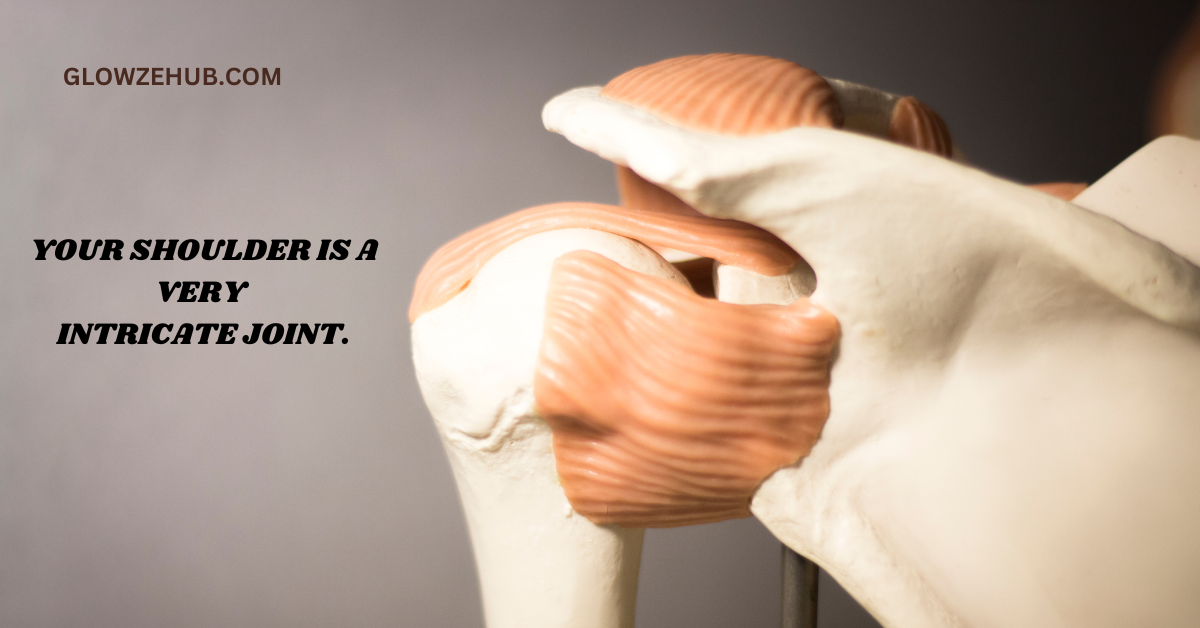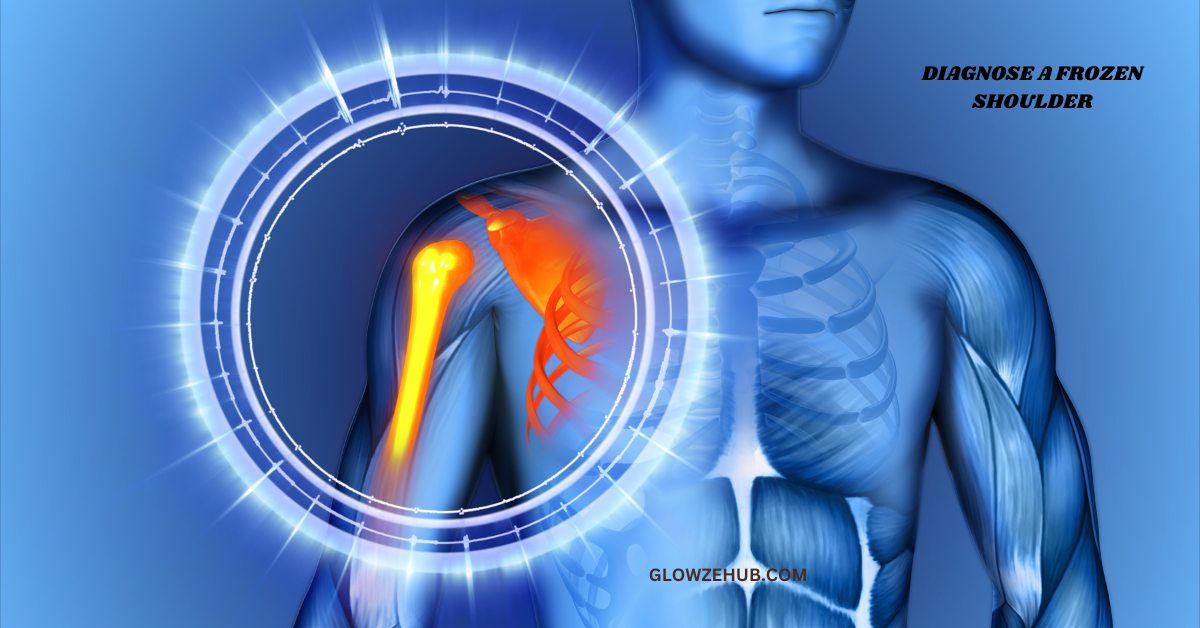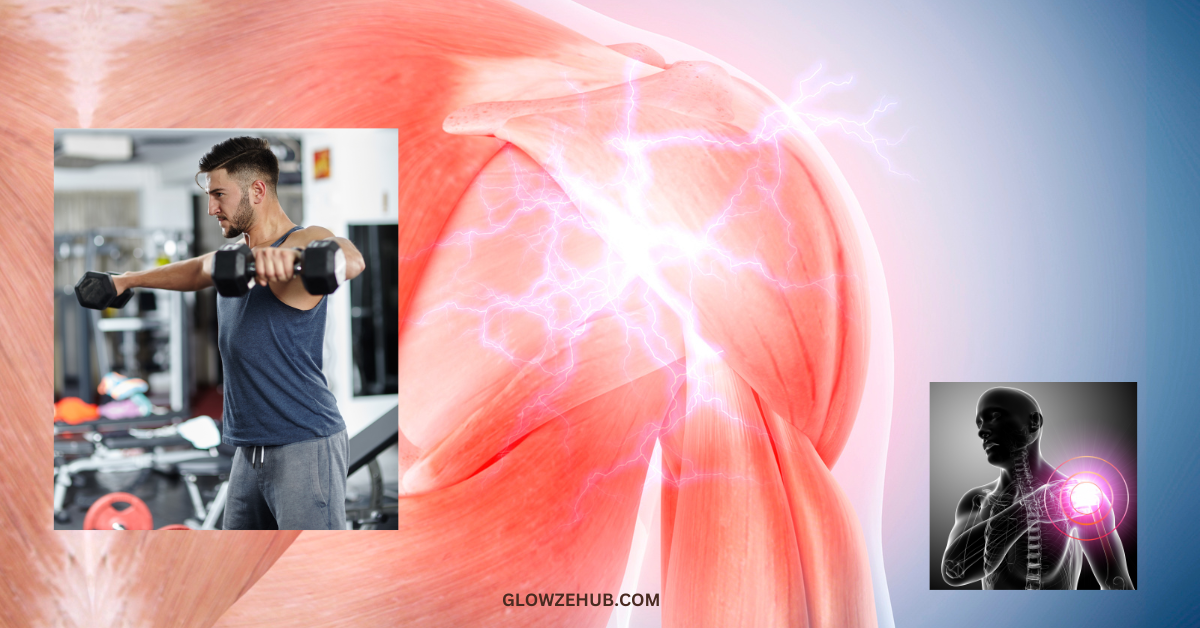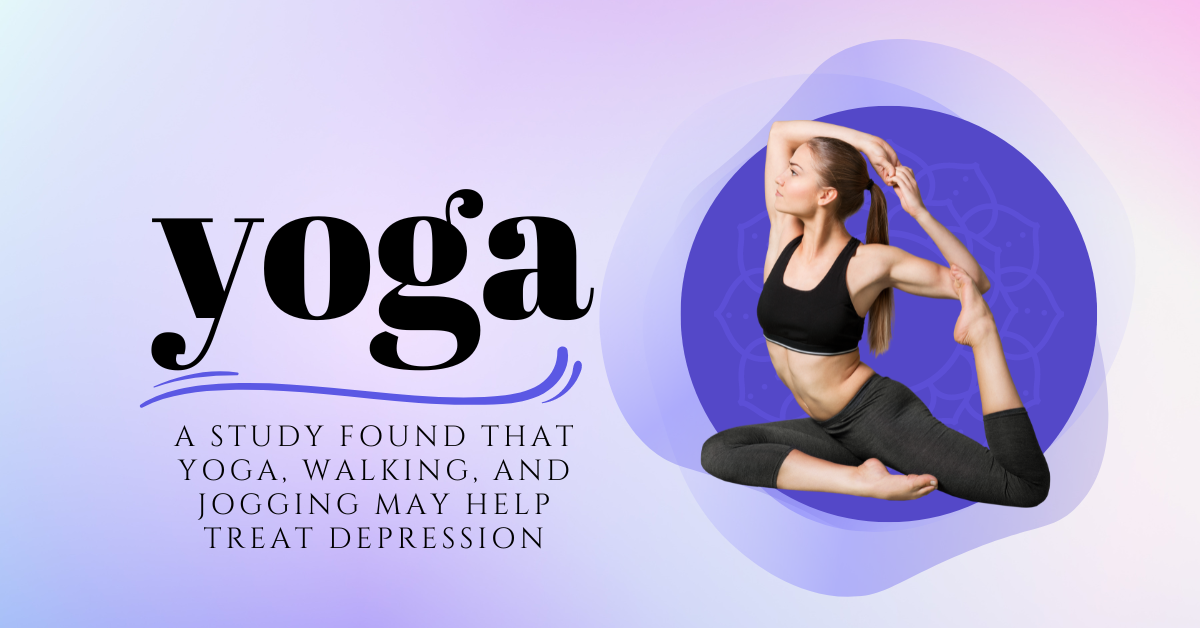What is a frozen shoulder? If you have a frozen shoulder, simply holding your phone and scrolling may be uncomfortable – and that’s not even considering how hard it might be to wash your teeth or get comfy in bed.
Approximately 7% of adults in the United Kingdom suffer shoulder joint problems at any given time. 7% may not sound like a large number, but it might be up to 3-4 million people, making shoulder difficulties a significant cause of impairment in the population.
So, what can we do about this?
As much as we wish we could, we can’t magically remove shoulder discomfort, and 4 million+ therapy sessions would take a lot to complete. In the meantime, we can offer some of our frozen shoulder information, which includes: Celine Dion health
- How a frozen shoulder occurs.
- What’s happening within your frozen shoulder?
- Some critical dos and don’ts if you’re having frozen shoulder symptoms.
Understanding the frozen shoulder
Frozen shoulder, also known as ‘adhesive capsulitis,’ is a common shoulder joint problem that produces stiffness and pain and can often limit your range of motion. In brief, it is quite uncomfortable and prevents you from performing many normally basic tasks.
Unfortunately, frozen shoulder worsens if not treated, so even if you seek care from your doctor or GP, you must understand what’s going on in your shoulder so you can make additional efforts to improve it.
Your shoulder is a very intricate joint.
The amount of movement that happens when humans articulate their arms contributes to their susceptibility to shoulder problems. The shoulder joint has the greatest range of motion of any joint in your body, and greater motion implies more potential problems.
If you have a frozen shoulder, simply holding your phone and scrolling may be uncomfortable – and that’s not even considering how hard it might be to wash your teeth or get comfy in bed.
Approximately 7% of adults in the United Kingdom suffer shoulder joint problems at any given time. 7% may not sound like a large number, but it might be up to 3-4 million people, making shoulder difficulties a significant cause of impairment in the population.
So, what can we do about this?
As much as we wish we could, we can’t magically remove shoulder discomfort, and 4 million+ therapy sessions would take a lot to complete. In the meantime, we can offer some of our frozen shoulder information, which includes:
- How a frozen shoulder occurs.
- What’s happening within your frozen shoulder?
- Some critical dos and don’ts if you’re having frozen shoulder symptoms.
Understanding the frozen shoulder
Frozen shoulder, also known as ‘adhesive capsulitis,’ is a common shoulder joint problem that produces stiffness and pain and can often limit your range of motion. In brief, it is quite uncomfortable and prevents you from performing many normally basic tasks.
Unfortunately, frozen shoulder worsens if not treated, so even if you seek care from your doctor or GP, you must understand what’s going on in your shoulder so you can make additional efforts to improve it.
Your shoulder is a very intricate joint.
Part of the reason humans are so prone to shoulder injuries is due to the amount of movement that occurs when they articulate their arms.
The ‘glenohumeral joint’ is a ball and socket joint located at the core of your shoulder that joins the top of the upper arm bone to part of your shoulder blade. This link is created by a joint capsule, specifically your shoulder joint capsule. This capsule is filled with a lubricant that keeps things flowing, and it is surrounded by tendons, ligaments, and cushioning that softens your movements. When moving your arm, this remarkable structure pulls, pushes, and twists thanks to a network of muscles and connections known as the ‘rotator cuff.’
As amazing as our shoulder architecture is, the sheer volume of connective tissue and variations in mobility in our shoulders make them prone to wear and tear and injury.
Okay, but what is the main reason for a frozen shoulder?!
We discussed shoulder muscles and movement since no ‘one thing’ causes a frozen shoulder.
A physical therapist will explain that a frozen shoulder usually begins with an injury. That could be something obvious, like a fracture, or something subtle, like ongoing inflammation of the soft connective tissues around the joints.
In any case, inflammation is the most common source of issues. That is exactly what the phrase ‘adhesive capsulitis’ means; ‘itis’ is inflammation, ‘capsule’ refers to the shoulder capsule and adhesive means ‘ stuck.’ So, if you want to look like a shoulder-mobility nerd, you now have some Latin in your arsenal.
Why does a small amount of shoulder joint inflammation matter?
Inflammation is not necessarily bad. It fights infection, heals damage, and protects the inflamed area when it works properly. However, when inflammation is overactive or not allowed to subside, it can lead to a variety of major problems, including Parkinson’s disease, cardiovascular disease, arthritis, and other life-limiting or life-shortening conditions.
Inflammation of the area causes the connective tissues surrounding your shoulder joint to thicken and compress, reducing its natural ability to stretch. When this tissue is inflamed, moving your shoulder hurts, but not driving it causes the capsule to tighten even more. Scar tissue can exacerbate discomfort and stiffness in extreme circumstances, such as a frozen shoulder caused by a rotator cuff tear.
How can you know if your shoulder is frozen?
If you have a lot of pain and limited movement in your arm, you will likely be able to diagnose your frozen shoulder.
Most people experience discomfort when performing normally painless tasks. If your shoulder gets especially uncomfortable or tight while dressing, washing, brushing your teeth, exercising, driving, or lifting items from high shelves, consult a specialist.
Different stages of a frozen shoulder.
Most medical practitioners discuss a frozen shoulder in terms of three stages, which are:
The first stage is known as the “freezing” or uncomfortable stage.
This is where the condition is most painful or worsening. If you sustain an injury, this stage can occur fast; nevertheless, most frozen shoulders worsen over 6 weeks to 9 months.
The second stage is “frozen” or rigid.
The second stage of the injury is less painful, but a limited range of motion and rigidity distinguishes it. This period can last 6 to 9 months, depending on how much physical treatment you receive.
Stage 3: ‘Unfreezing’ or ‘Thawing’ stage
Movement becomes easier as the illness progresses, and pain is greatly reduced. Although your range of motion will progressively improve over 6 months to 2 years, the condition will become much less life-threatening.
What should (and shouldn’t) you do if your shoulder is frozen?
One of the therapy experts here at glowzehub will be able to help define some particular treatment alternatives, along with health information from your doctor. However, there are certain obvious frozen shoulder dos and don’ts:
- ✓ DO: Keep moving the shoulder as much as your pain allows. Our therapists can offer some very gentle shoulder exercises to aid.
- ✓ Seek medical advice. Some people dislike taking pain drugs, but they may be exactly what is required to restore natural movement.
- ✓ Pain relievers, anti-inflammatory drugs, and steroid injections can produce instant results.
- ✓ If your doctor or therapist recommends an x-ray or scan, visit the hospital.
- ✗ Avoid pushing through pain from your injuries. This often results in more inflammation and damage.
- ✗ Avoid tasks or exercises that may cause sudden jerking or pulling on the shoulder.
Who can diagnose a frozen shoulder?
Although they are a wonderful place to start, your doctor may only sometimes be able to identify a shoulder condition accurately.
Instead, they’ll typically recommend you to a physiotherapist or osteopath, who will work with you to determine the source of the problem. A therapist normally treats frozen shoulder problems in their clinic and then designs a home exercise regimen based on your symptoms. They may also refer you to additional medical services if necessary.
How does one unfreeze a frozen shoulder?
As people who have suffered from shoulder injuries, we understand you’ve probably read down to this point hoping for a magical treatment.
Unfortunately, we cannot. But we can provide you with some tips that will get you on the path to recovery sooner rather than later.
Get medical and therapy care for your shoulder issue right now.
Consult a doctor about the pain in the afflicted arm; the longer you wait. The more inflammation and swelling can develop, reducing your range of motion and increasing pain.
Embrace the Cold
Take an ice pack (or a pack of peas) out of the freezer. When applied for 10-15 minutes, cold treatment can considerably reduce inflammation three or four times daily.
Will your frozen shoulder require surgery?
It’s normal that the prospect of shoulder surgery makes you uncomfortable. But don’t panic; surgical options are often only considered if physical therapy isn’t producing significant results. A steroid injection is a common non-surgical technique that can perform swiftly and painlessly as an outpatient.
Looking to exercise with a frozen shoulder?
At glowzehub, we understand how a frozen shoulder can bring pain and agony for months – even years. However, we know you want to maintain your fitness and health while recovering.
This is why our services focus on you and any issues you may be experiencing. Our skilled staff can create exercise and treatment regimens to keep your fitness objectives. In sight while protecting your long-term health and well-being.







